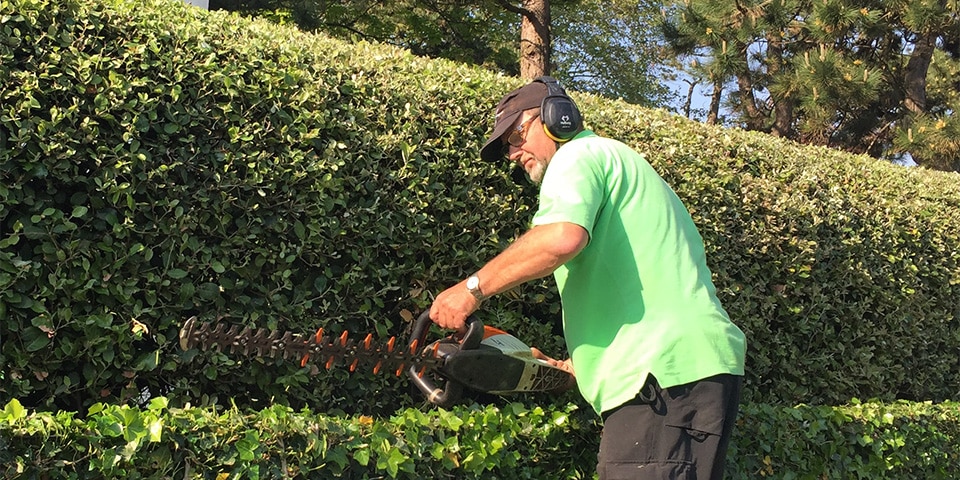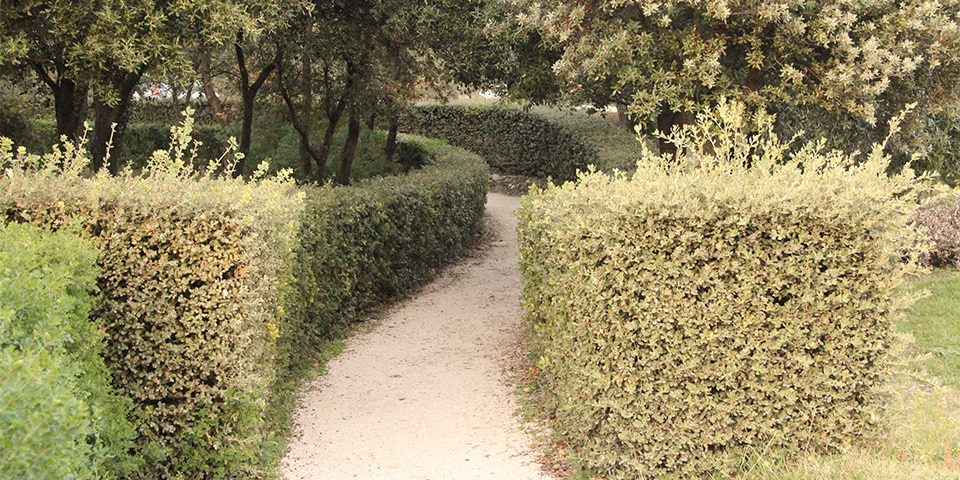
Quercus ilex as an evergreen hedge with character
The boxwood hedge has had a hard time in recent years in our regions - thanks to the boxwood moth. The holly hedge, yew or hornbeam are a good alternative, but if it depends on Hugo Maes, it will be the Quercus ilex (holm oak), in hedge form. Maes is one of the few in our country who has devoted himself to the cultivation of this hardy woody plant from Southern Europe and North Africa.
Holm oak is notable for its thick, leathery, dark green leaves with felt-gray, silvery undersides. In May and June, holm oak blooms with an abundance of soft yellow flowers. The leaves can be smooth-edged or holly-toothed. Quercus ilex is evergreen but may partially lose its leaves during extended periods of cold, which are, however, immediately replaced by young and fresh leaves. This evergreen aspect makes the holm oak particularly suitable for planting in hedge form.
Tightly trimmed looks beautiful
The holm oak is originally a tree that can grow tall in its natural habitat. However, the young plants can be perfectly contained by means of topiary and thus form tight, compact and continuous hedges or massifs. Two pruning sessions a year, in April and September, are sufficient to maintain a good hedge shape. Looser pruning forms are also possible, where one pruning is sufficient.

Quercus ilex hedge in playful, curved form.
Enclosure, garden room, wind barrier
The applications of holm oak in hedge form are extremely versatile. More and more landscapers are applying holm oak in their own gardens, which is downright significant. Quercus ilex hedges can serve as virtually impenetrable garden fences that ensure complete privacy. By applying different pruning heights, they can also be used to create beautiful, intimate garden rooms. Quercus ilex also feels at home in a salty and often windy maritime climate and is therefore often planted as a particularly resistant and evergreen windbreak in coastal gardens.
Resistant in all areas
Hugo Maes travels annually to the south of France. High in the cold hills of the garrigue, with its calcareous soils, he collects the ripe, pointed acorns of the holm oak. He sprouts these himself and grows them up into hedge bushes. Thanks to the care that goes into raising them, the plants can get used to our climate and soil conditions and are hardy to at least -18°C. Regular pruning and meticulous care of the young plants ensure that they grow into nicely branched and dense specimens, which quickly come into their own in their new environment after transplanting.
By meticulously selecting the seeds himself, the domestically grown holm oak has a much smaller leaf than the Italian import copies. The years of pioneering work by Hugo Maes have resulted in more and more garden architects stipulating in their specifications that the plants must be of Belgian origin, particularly because of their beautiful leaf shape and size.




